↓ Continue Reading To See This Amazing Video
Often considered the easy of all flowering plants to grow, flower bulbs make for magnificent additions to any flower bed, raised bed garden, container garden, and indoor planter collection. Coming in a huge array of colors, forms, shapes, blooming times, and sizes, these stunning plants are the perfect way to keep vivid color throughout the spring into autumn without any real effort on your part past planting them and keeping them watered.
Knowing the ins and outs of how to care for and plant them, however, can be the key to having healthy, thriving plants versus straggly, weedy plants.
What is a Flower Bulb?
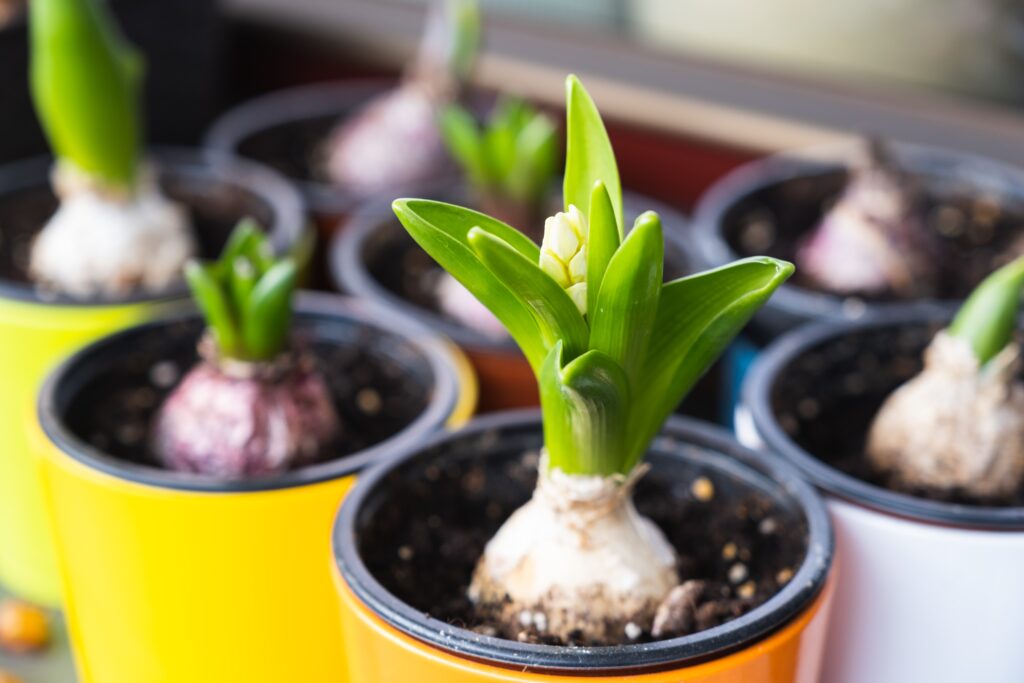
©Rudenko Alla/Shutterstock.com
Before we consider the care of flower bulbs, let’s define them just a bit. According to the folks at the University of Illinois, a bulbs is an “underground, fleshy storage structure” that produces plants. The bulbs store the entire life cycle of the plant within them. These may be flowering bulbs, leafy plants, or vegetables.
True bulbs, corms, tubers, tuberous roots, rhizomes, and fleshy roots all develop underground, storing this life cycle, and most details of their care are interchangeable, though technically different, at least in definition. In most plants, unless stated otherwise, basic bulb care will suit.
Popular Types of Flower Bulbs
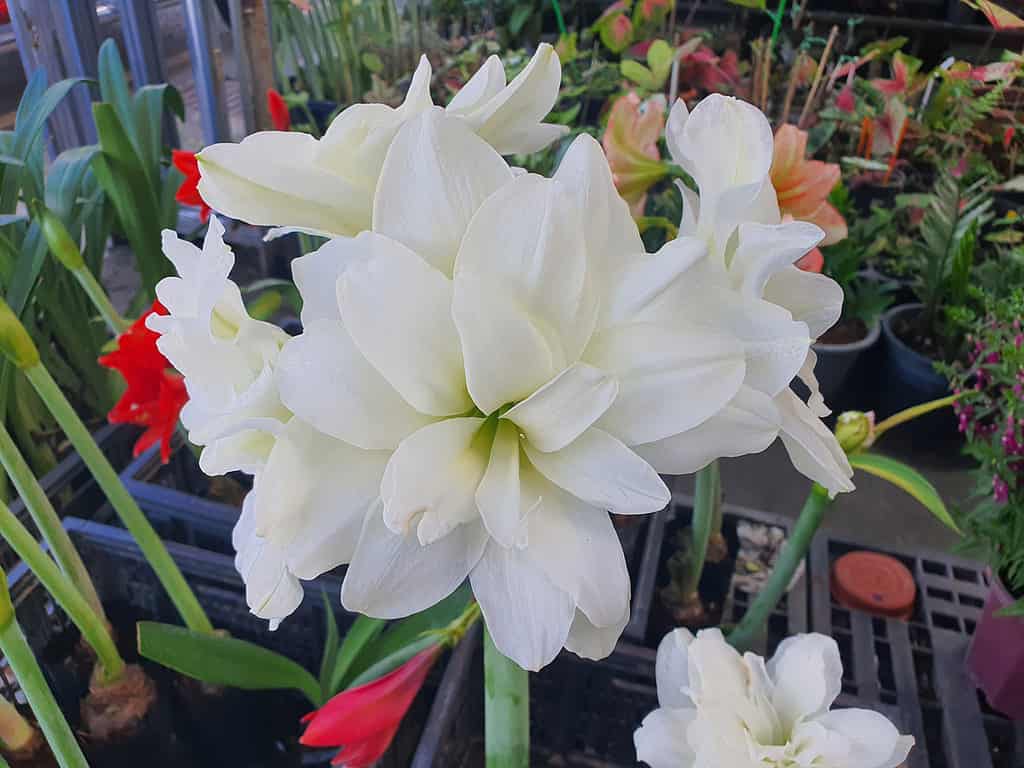
©iStock.com/Patcharamai Vutipapornkul
Highly favored among flower growers, bulb plants produce a wide range of colors, forms, and types, most of which are easy to care for. Some of the popular choices include:
- Begonias
- Anemones
- Amaryllis
- Lilies
- Tulips
- Buttercups
- Narcissus
- Nerine lilies
- Crocosmias
- Allium
- Bearded iris
- Spider lilies
- Rain lilies
- Gladiolus
- Oxalis
- Dahlias
- Pineapple lilies
- Calla lilies
- Canna lilies
- Freesia
- Crocuses
- Hyacinths
- Muscari (grapy hyacinths)
How to Choose Healthy Bulbs
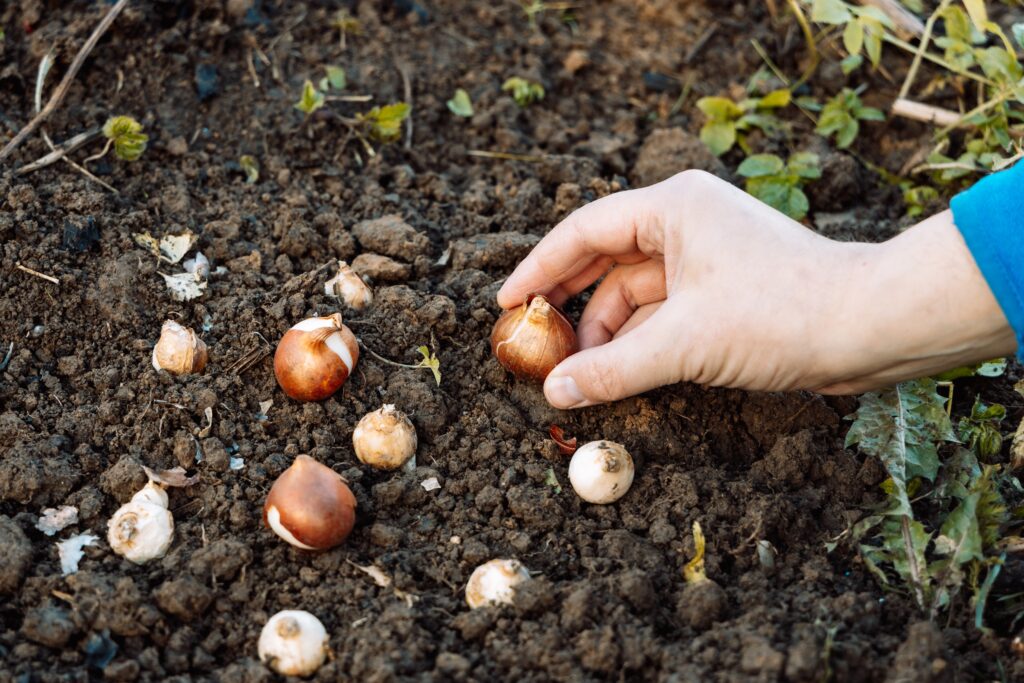
©S.O.E/Shutterstock.com
When you’re ready to plant some flower bulbs, there are a few things to look out for when purchasing.
- Only choose bulbs that are firm and not soft or spongy.
- Avoid bulbs that have large blemishes, knicks, mold, or signs of disease (discoloration or spots).
- Purchase quality bulbs from trusted nurseries and growers only. Cheap bulbs will not do well and likely won’t produce the vibrant flowers you’re hoping for.
- Purchase bulbs that have little to no root growth, save for lilies which may easily have healthy, fleshy roots and still thrive.
When to Plant Flower Bulbs
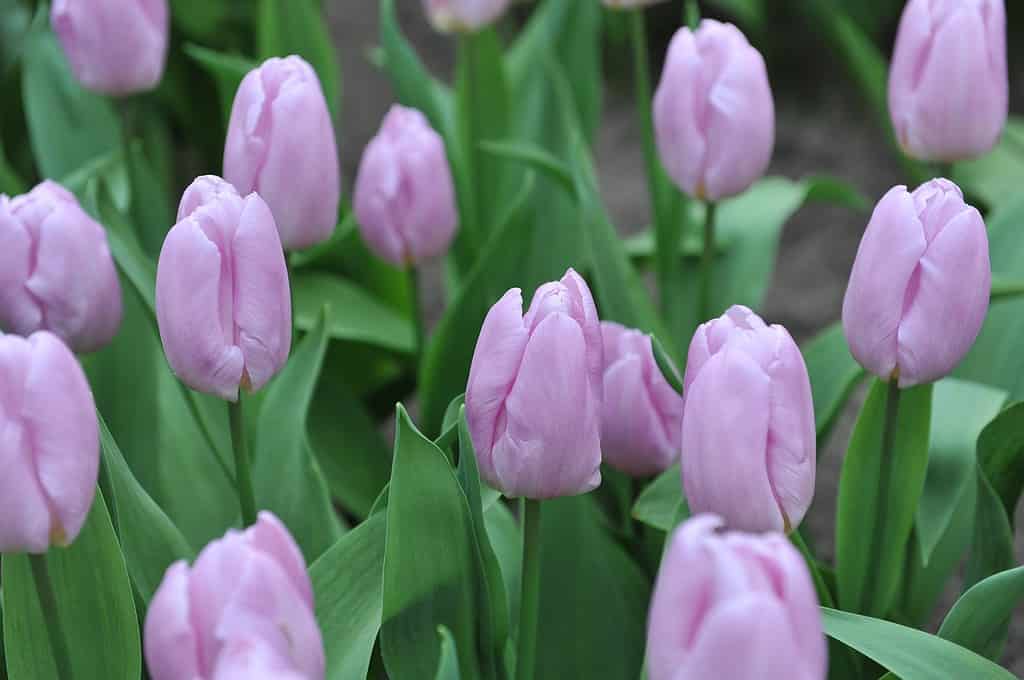
©Sergey V Kalyakin/Shutterstock.com
Planting season varies from USDA Zone to Zone, depending on blooming season.
Spring bulbs:
- Zones 4 and 5 – September and October
- Zones 6 and 7 – October into early November
- Zones 8 and 9 – November to December
- Zone 10 – Late December into early January
Summer bulbs:
- Zones 4 to 7 – May to June
- Zones 8 to 10 – Late March to May
Where to Plant Flower Bulbs
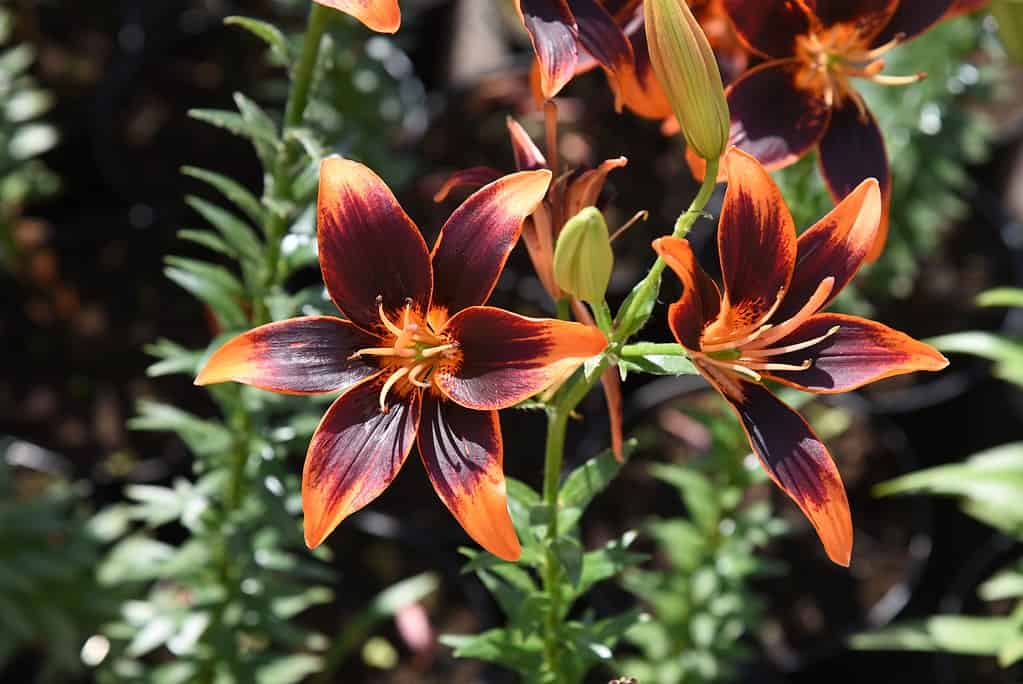
©photoPOU/Shutterstock.com
Well-draining soil is a requirement for pretty much every kind of bulb you can think of. This is because stagnant or soggy soil produces bulb or root rot, destroying plants. Most flower bulbs also thrive in full sun, with some doing well in partial shade. As long as these light requirements and soil needs are met, most bulbs will do just fine.
Check on the specifics of the type of plants you’re growing, though, to ensure any soil amendments needed are made, and whether or not the variety of plant you’re growing can tolerate partial shade or not.
Plan Your Garden Before You Plant
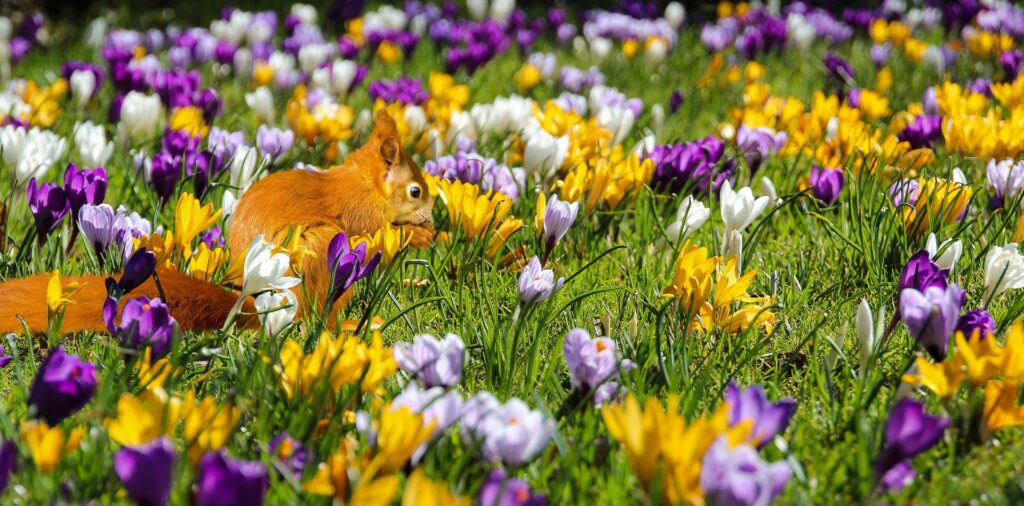
©
Because flower bulbs may be used in any number of settings, it’s important to plan out your garden space before you first pick up the trowel.
- If you’re going for the full visual effect, plan to grow your bulbs in clusters. This will offer the most dramatic impact, save for use of a given taller or distinctive bulb specimens. Or consider planting your bulbs in designs or patterns by color, height, or fullness for varied aesthetics.
- Note that different bulbs bloom at different times of the season and the year. Crocuses, for example, bloom in late winter to early spring, while lilies are summer flowers and dahlias in autumn. Plant in waves to provide color throughout the whole of the flowering season.
- Plant taller flower bulbs in the back of garden beds to avoid preventing shorter plants from receiving full sun.
How to Plant Flower Bulbs
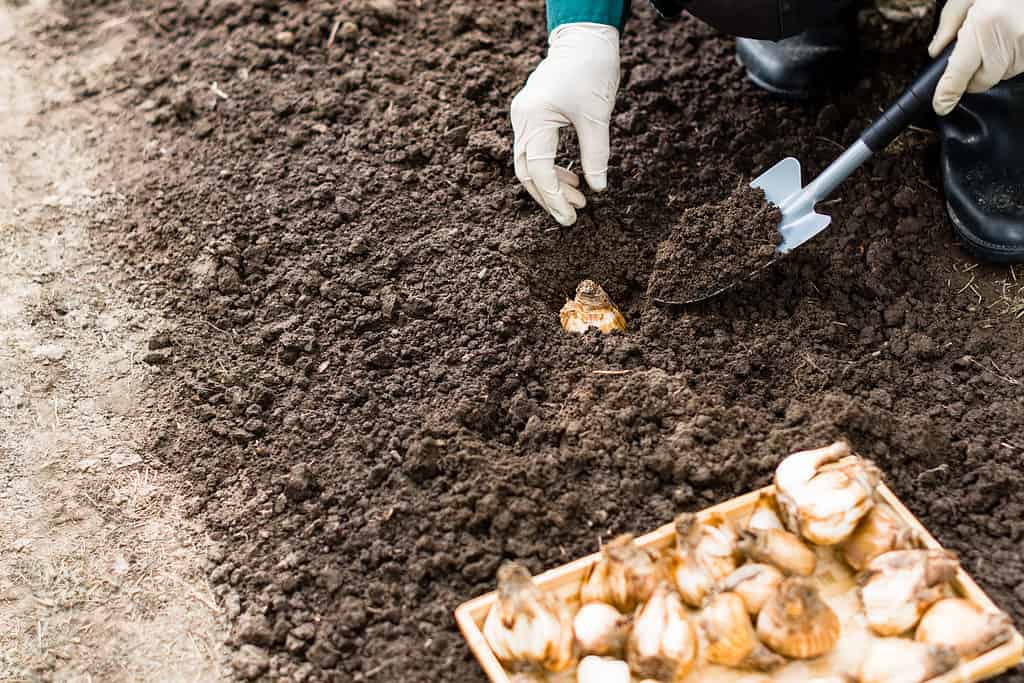
©Jurga Jot/Shutterstock.com
The details for flower bulb planting will vary somewhat from plant to plant, but the basic principles are the same in most cases.
- Study up on each type of flower bulb you’re growing and learn when each bulb blooms, how deep it should be planted, and which end goes up.
- If you have issues with moles, mice, or other underground or digging critters, dig deeply enough to plant the bulbs in bulb cages or fine mesh to protect them against pests.
- Prepare soil by loosening it with trowels or rakes, and mix in any organic matter, bone meal, or other amendments needed for the given bulb types.
- Most bulbs should be planted with the pointed ends up. Place the bulbs with roots downward when defined or sideways when you’re not sure when end should be up.
- Layer soil over the bulbs and, if recommended for the given bulb type, layer on mulch.
- Water immediately.
- Maintain soil moisture as recommended for the given type of bulb.
Basic Care for Flower Bulbs

©Pavel Filatov/Shutterstock.com
All of the life cycle is stored within each bulb, so, in most cases, once a bulb is planted, it requires little attention from the gardener. A few things can help them thrive, however.
- Only plant bulbs hardy in your USDA Growing Zone if you’re planting outdoors.
- Plant bulbs as quickly as possible when you bring them home or store in the fridge until you’re ready to plant them.
- Pre-chill bulbs if planting off-season bulbs.
- Water bulbs thoroughly after planting to immediately provide the care they need.
- Once sprouts emerge in potted bulb plants, frequently water them to keep them healthy and happy.
- Bulbs love moist but never soggy soil. Waterlogging them will likely result in bulb rot.
- Avoid letting bulbs dry out in summer, dry periods, or autumn when they are not in bloom.
- Fertilize bulbs after they’ve bloomed, not beforehand, but only if the soil they’re planted in isn’t already rich with nutrients.
- Use bulb food not bone meal for most bulbs – with a low-nitrogen content, between 5-10-5 to 12-12-12.
- Allow foliage to die back before trimming. This allows the plant to store up nutrients for the next season.
- Apply mulch to bulbs after the first hard freeze to keep the temperatures more consistent for the bulbs.
- Remove mulch when springtime hits and bulbs start producing foliage again.
- Don’t be afraid to stake taller plants if they seem to be drooping a bit.
- Protect taller bulb plants from the wind to keep the stalks and blooms healthy.
Other Helpful Hints for Caring for Your Flower Bulbs

- Unless otherwise noted, most flower bulbs produce brighter blooms when grown in soils with pH levels between 6.0 and 7.0.
- A marker placed near the bulbs in the dormant season can help prevent you from accidentally digging them up the next season.
- If you’re holding onto bulbs for more than a day or two before planting, make sure to keep them in breathable containers and not plastic as the plastic may trap too much moisture and kill the bulbs.
- Avoid storing bulbs in the fridge with any fruit or vegetables as these produce items can emit ethylene gas, which kills bulb plants. (This is part of why you don’t store onions in the fridge!)
